The document discusses artificial intelligence (AI), defining it as a field focused on creating intelligent machines capable of data analysis and responses, while outlining various search algorithms such as depth-first search, breadth-first search, and A* algorithm. It explains techniques for problem representation, including state spaces and graphs, and introduces key concepts like forward and backward chaining in inference logic. Additionally, the document touches on simulated annealing as a method for solving optimization problems through random variations and temperature-based probability acceptance.
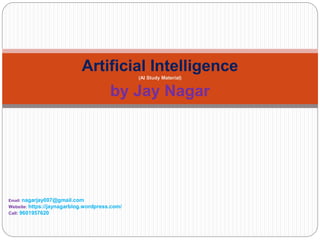


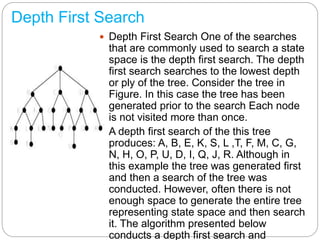
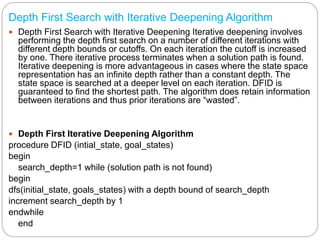
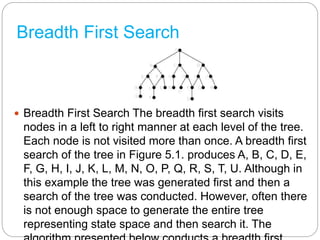
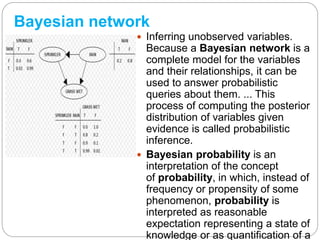

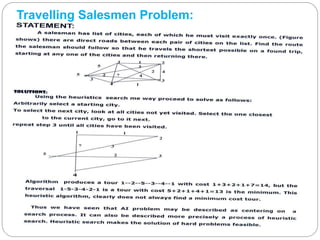








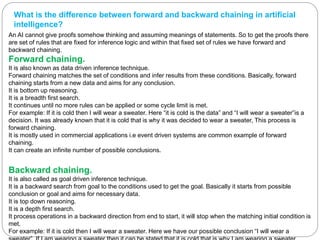
![ A technique to find a good solution to an optimization problem by trying random variations of the current
solution. A worse variation is accepted as the new solution with a probability that decreases as the
computation proceeds. The slower the cooling schedule, or rate of decrease, the more likely the
algorithm is to find an optimal or near-optimal solution.
Simulated annealing is a generalization of a Monte Carlo method for examining the equations of state
and frozen states of n-body systems [Metropolis et al. 1953]. The concept is based on the manner in
which liquids freeze or metals recrystalize in the process of annealing. In an annealing process a melt,
initially at high temperature and disordered, is slowly cooled so that the system at any time is
approximately in thermodynamic equilibrium. As cooling proceeds, the system becomes more ordered
and approaches a "frozen" ground state at T=0. Hence the process can be thought of as an adiabatic
approach to the lowest energy state. If the initial temperature of the system is too low or cooling is done
insufficiently slowly the system may become quenched forming defects or freezing out in metastable
states (ie. trapped in a local minimum energy state).
The original Metropolis scheme was that an initial state of a thermodynamic system was chosen at
energy E and temperature T, holding T constant the initial configuration is perturbed and the change in
energy dE is computed. If the change in energy is negative the new configuration is accepted. If the
change in energy is positive it is accepted with a probability given by the Boltzmann factor exp -(dE/T).
This processes is then repeated sufficient times to give good sampling statistics for the current
temperature, and then the temperature is decremented and the entire process repeated until a frozen
state is achieved at T=0.
By analogy the generalization of this Monte Carlo approach to combinatorial problems is straight
forward [Kirkpatrick et al. 1983, Cerny 1985]. The current state of the thermodynamic system is
analogous to the current solution to the combinatorial problem, the energy equation for the
thermodynamic system is analogous to at the objective function, and ground state is analogous to the
global minimum. The major difficulty (art) in implementation of the algorithm is that there is no obvious
analogy for the temperature T with respect to a free parameter in the combinatorial problem.
Furthermore, avoidance of entrainment in local minima (quenching) is dependent on the "annealing
schedule", the choice of initial temperature, how many iterations are performed at each temperature,
and how much the temperature is decremented at each step as cooling proceeds.
Simulated annealing has been used in various combinatorial optimization problems and has been
particularly successful in circuit design problems
Define simulated annealing?](https://image.slidesharecdn.com/presentation1-180325181223/85/Artificial-Intelligence-19-320.jpg)